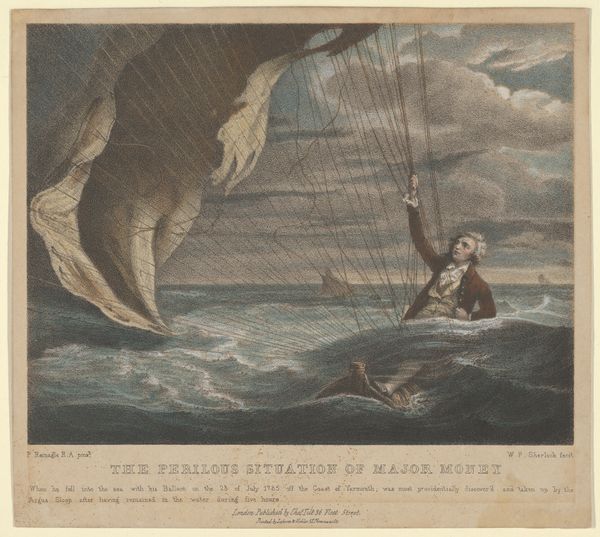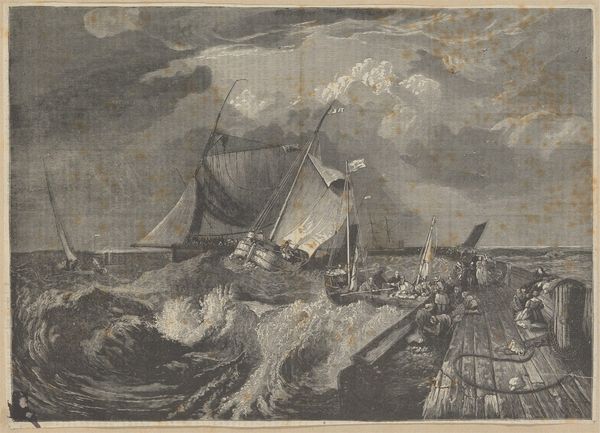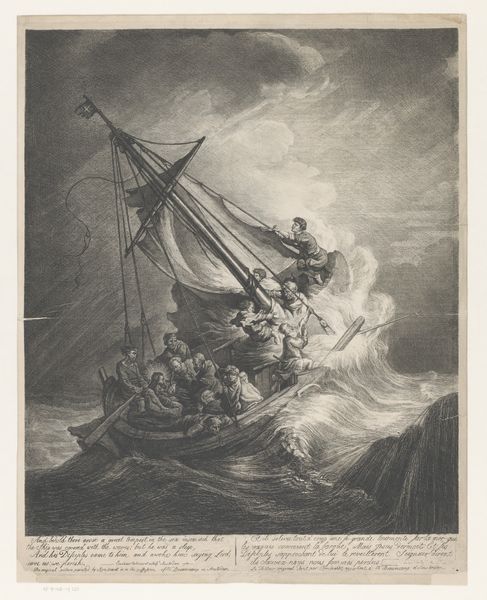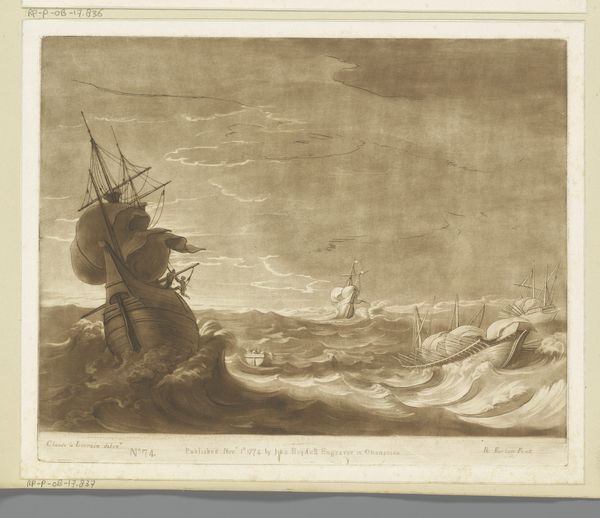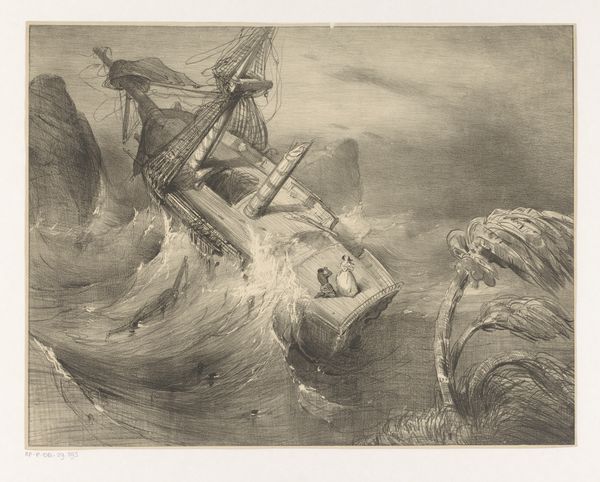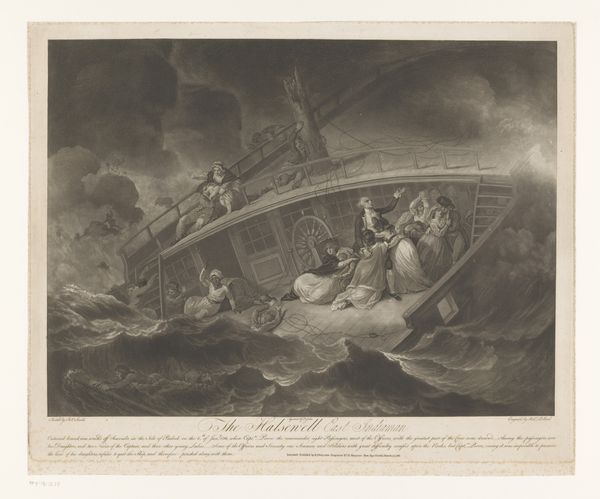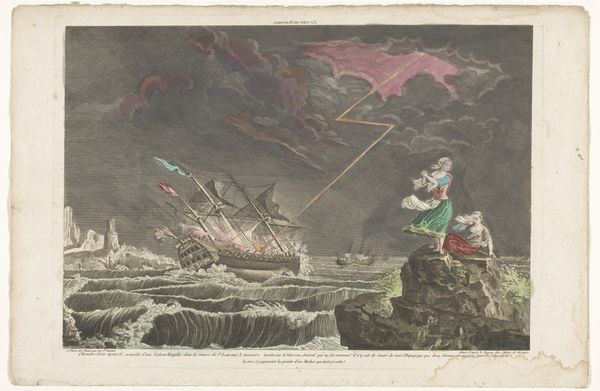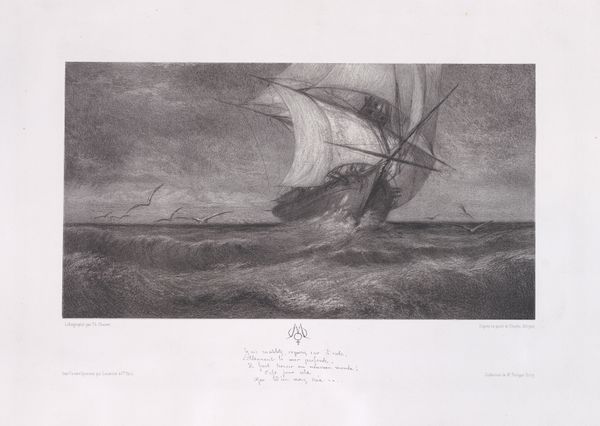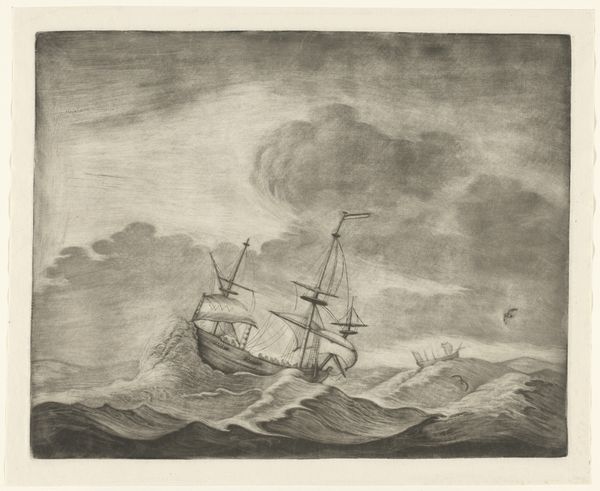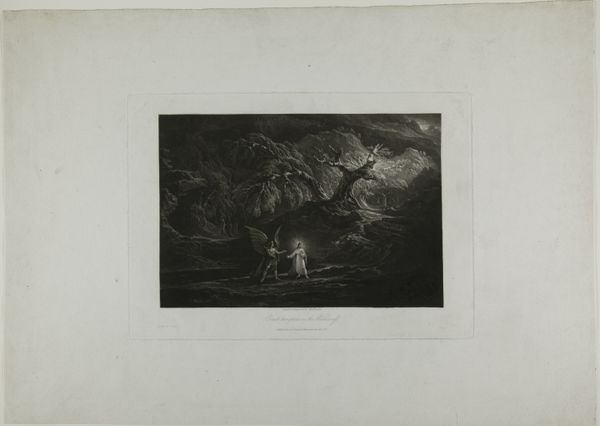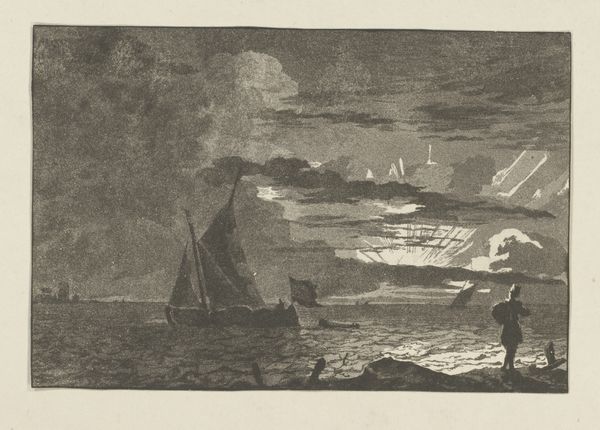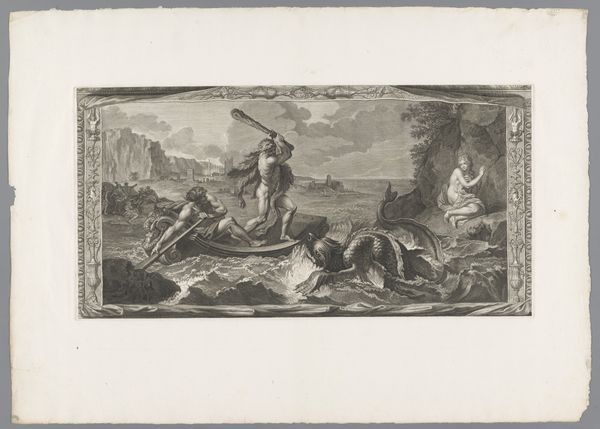
The Perilous Situation of Major Mony, When He Fell into the Sea with His Balloon on the 23rd of July, 1785, Off the Coast of Yarmouth; Most Providentially Discovered and Taken Up by the Argus Sloop, After Having Remained in the Water During Five Hours 1789
0:00
0:00
drawing, print, etching
#
drawing
# print
#
etching
#
landscape
#
figuration
#
romanticism
#
history-painting
Dimensions: plate: 19 15/16 x 23 7/8 in. (50.7 x 60.7 cm) sheet: 21 1/4 x 25 9/16 in. (54 x 65 cm)
Copyright: Public Domain
Curator: What a dramatic scene! It’s "The Perilous Situation of Major Mony, When He Fell into the Sea with His Balloon on the 23rd of July, 1785, Off the Coast of Yarmouth; Most Providentially Discovered and Taken Up by the Argus Sloop, After Having Remained in the Water During Five Hours" by John Murphy, made in 1789. An etching that captures a very specific moment in time. Editor: Perilous is right. It has an eerie stillness despite the implied chaos. The subdued color palette accentuates the man's isolation. The lines connecting him to the balloon remains form a strong, centralized structure around him which immediately attracts the eye. Curator: Absolutely. Balloons in the late 18th century were relatively new, thus novel, technological marvels, fraught with risks and this print commemorates just such a publicized incident of early flight. The image, with its explicit title, taps into the sense of adventure but also highlights human vulnerability against the elements. Editor: Precisely. We have the fragile balloon dominating the sky and this single figure battling the sea. The use of dramatic light and shadow heightens the sense of vulnerability—a key characteristic of Romanticism that sought to represent extreme and heightened emotional experiences. Look at how the diagonals of the ropes emphasize dynamism, almost as if to contrast with the man's stasis in the water. Curator: Yes, and water, as a symbol, traditionally represents the subconscious. The ropes trailing towards the ship which is shown off in the distance—a classic motif—suggest that he's hanging by a thread, with deliverance as his only option. Note also his gesturing towards heaven for salvation. This speaks to themes of survival, and hope. It uses familiar archetypes that make his peril resonate more universally. Editor: What's most fascinating to me is that balance. The composition carefully orchestrates the relationships between these disparate formal elements—light, line, mass. They converge on the man in the water as the visual anchor and moral focus, a truly fascinating composition, Curator: Agreed. Murphy masterfully weaves this historic event into a tale of both personal and collective experience, reflecting on our relationship with progress and the untamed forces around us. Editor: An exquisite dance of form and feeling, capturing a single moment’s significance, a man in crisis to reveal the complexities and contradictions within our experience.
Comments
No comments
Be the first to comment and join the conversation on the ultimate creative platform.
